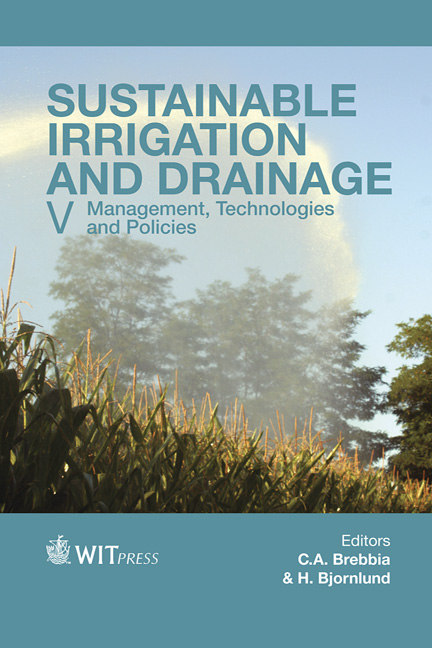A Comparative Study Of The Impact Of Deficit Irrigation On Cucumber Yields Planted In A Greenhouse And An Open Field In An Arid Environment
Price
Free (open access)
Transaction
Volume
185
Pages
12
Page Range
113 - 124
Published
2014
Size
405 kb
Paper DOI
10.2495/SI140111
Copyright
WIT Press
Author(s)
A. M. Al-Omran, I. Louki, A. A. Aly
Abstract
In this study, a deficit irrigation program was investigated for its impact on cucumber crop yield (Cucumbis sativus L.) planted in an open field and a greenhouse using a drip irrigation system during 2008–2011 growing seasons. The irrigation treatments were four levels of ETc (40, 60, 80 and 100%) in addition to the traditional practice of local farmers. At 60 and 80% ETc treatments, the deficits of irrigation were tested at different growth stages (development, middle and late stages of growth) for a total of 12 treatments in each experiment; furthermore, three replicates for each treatments were carried out. The data showed that the cucumber could tolerate a shortage of water during the middle season growth stage for both the greenhouse and the open field, and the crop response factor (Ky) values ranged between 0.57–0.76 and 0.96–1.02 for the greenhouse and the open field respectively. The amount of water used in 100% ETc was much lower than that of the traditional drip irrigation used by farmers, moreover the crop water productivity (CWP) values increased when the water amount decreased. The results also indicated that the highest values for CWP were found in the most stressed treatments of 40% ETc, and on the other hand the overall productivity decreased.
Keywords
deficit irrigation, crop response factor, water use efficiency, drip irrigation





